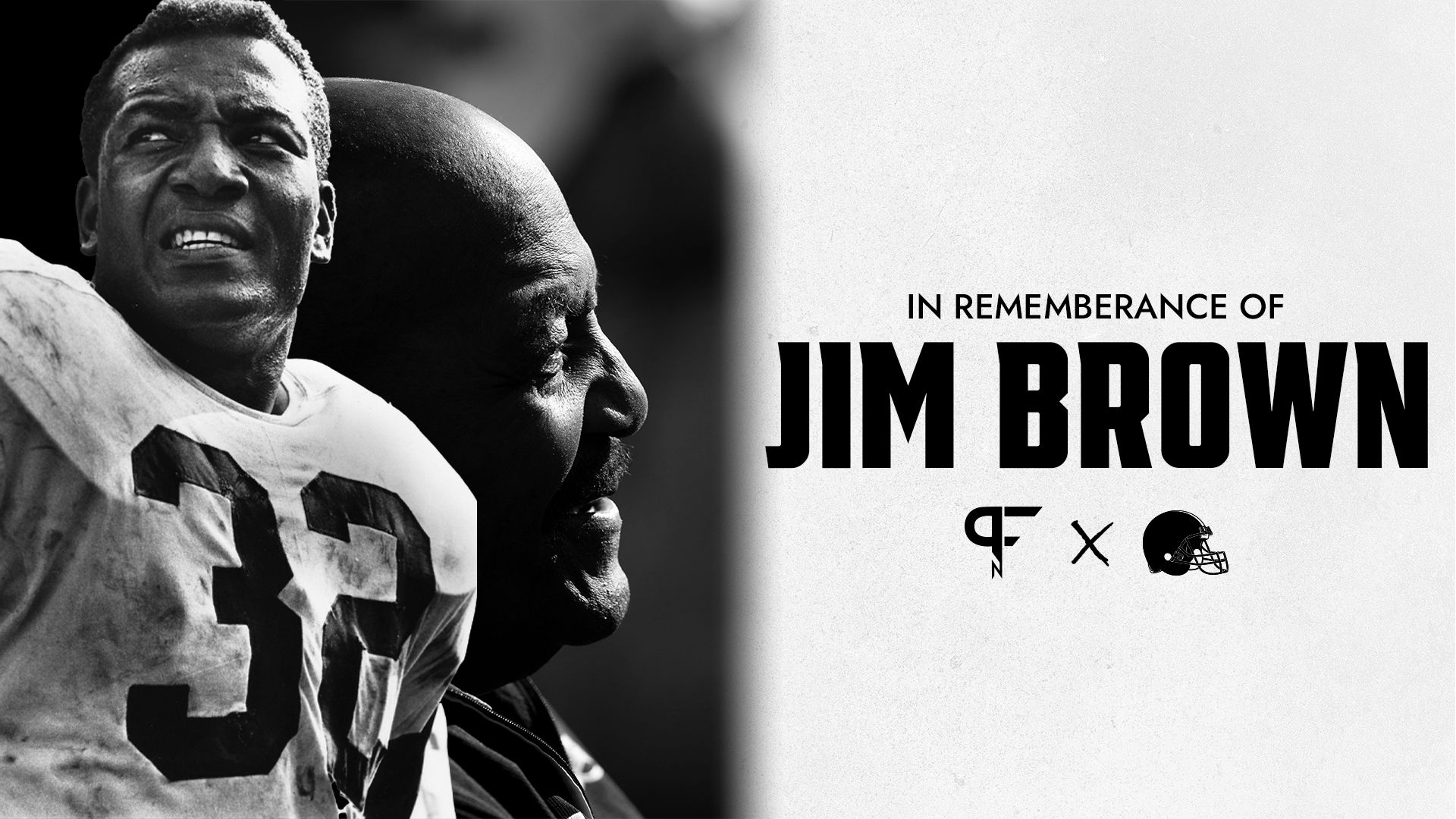Hall of Famer Jim Brown passed away Thursday night at the age of 87. He had no equal on the football field. And given the context of when he played, he will never have an equal.
Jim Brown’s Early Career
Born in Georgia and mostly raised in New York, the son of a professional boxer and a domestic worker, Brown thrived on athletic competition. He played on his high school football, basketball, baseball, and lacrosse teams, and also ran track. At Syracuse University, he continued with four of the five sports (all except baseball).
Despite becoming an All-American in football and lacrosse, Brown was subjected to racist diatribes. Because this was the mid-1950s.
The crown jewel of individual college football recognition was, and still is, the Heisman Trophy. No Black man won the award until Syracuse’s Ernie Davis in 1961. But Brown arguably should have won it five years earlier. Instead, Brown finished fifth in the balloting. The runner-up that year, Johnny Majors, has repeatedly insisted that Brown deserved it.
Brown’s NFL Career
Imagine if Bijan Robinson rushed for 2,500-3,000 yards per season for most of his career. The idea is almost inconceivable. He would need to be the greatest running back of all time.
When the Cleveland Browns selected Brown No. 6 overall in the 1956 NFL Draft, the single-season record for rushing yards was Steve Van Buren’s 1,146 in 1949. He carried the ball 263 times that year, averaging a respectable 4.4 yards per carry. In the opening decades of the league, his ’49 campaign was the pinnacle of RB greatness.
Brown topped it in only his second season.
Scratch that: he didn’t just “top” it. He compiled a 257-1,527-17 rushing line. Brown exceeded Van Buren’s yardage total by 33% in the same number of contests (12).
In total, Brown led the league in rushing yards in eight of his nine campaigns while averaging a sterling 5.2 yards per carry. He played in all 118 of Cleveland’s regular-season games during his tenure, and all four playoff games. He helped lead the Browns to the 1964 Championship — the last one this city has seen.
This is the crux of Brown’s on-the-field NFL legacy. Saying he was “great” diminishes his greatness. He was more than that. Brown established new parameters for greatness. He redefined his position. He changed the game.
Brown’s passing isn’t merely the end of an era for the NFL. It’s the end of an era for sports.
He once said, “What you got to do to compete is compete.”
And that pretty much sums up Brown, the man. His no-nonsense approach to the field carried over to life. Whatever he did, Brown knew what he had to do. And he got it done. And most of us still have no idea how the hell he did it.

